Opinion & Analysis
The Wedge Guy: A discussion of bounce
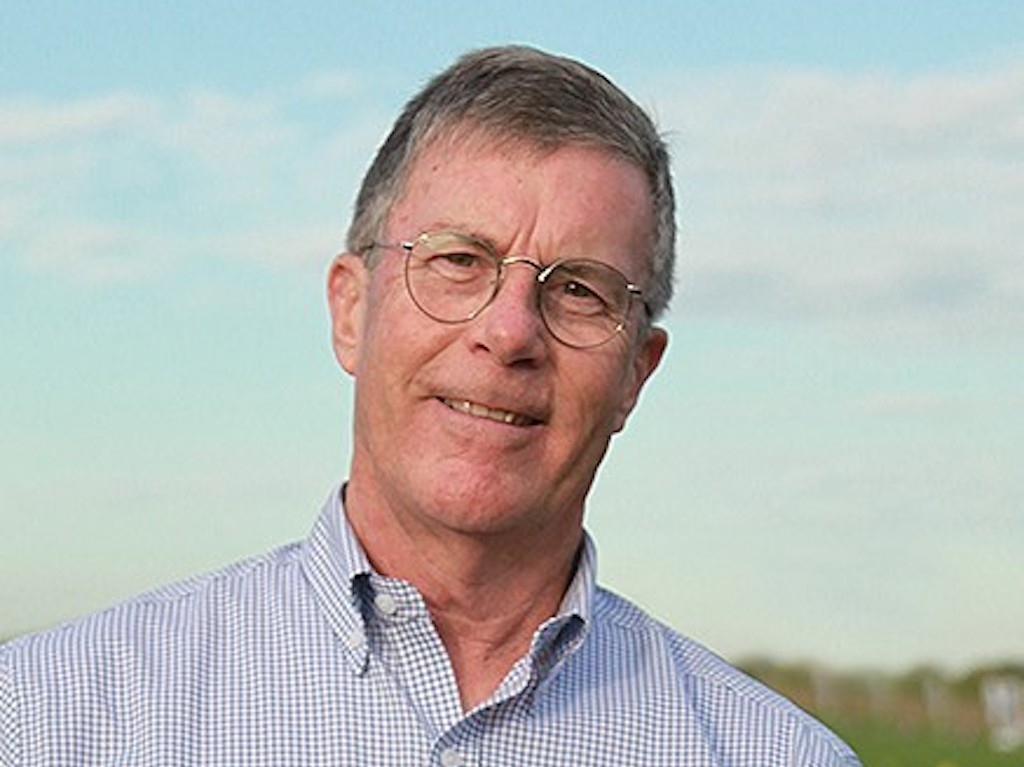
Based on my 25+ years as a wedge designer and marketer, I can easily say that ‘bounce’ is the most mis-understood aspect of wedges and wedge-fitting. I’ve learned that a great number of golfers are totally confused about this very important design feature of wedges. So here goes.
A primer: What is bounce?
Very simply, “bounce” is the design feature of the sole of a wedge (or actually, any golf club) that helps it perform properly when it makes contact with the turf. A “worm’s eye view” of any wedge shows that the sole of the club has a downward angle from the leading edge back to the trailing edge. That angle, in relation to the horizontal line of the turf is what is defined as the “bounce angle”.
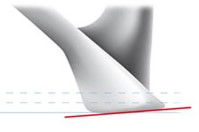
low bounce
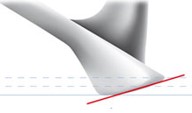
high bounce
In general, the higher that angle (measured in degrees from the horizontal plane of the turf), the more the club will tend to be “rejected” by the turf upon impact. Conversely, the lower the angle the less “rejection force” will be experienced. But also realize that the width of the sole and the bounce angle combine to produce a certain playability. A wide sole with a low bounce angle might perform very similar to (but also very differently than) a narrow sole with a higher bounce angle. Bounce is just not a simple subject.
How do I pick the right bounce?
To further compound the confusion you might have, the wedge marketplace offers hundreds of choices of loft/bounce combinations, and the industry has settled on this basic advice to help you navigate through this maze.
- For soft turf or fluffier lies, you want a higher bounce angle.
- For firm turf or tighter, you want a lower bounce angle.
- If you have a steep angle of attack, you want a high bounce.
- If you have a shallower angle of attack, you want a lower bounce.
Here is where I’ll call on my analysis of over 40,000 wedge-fitting “interviews” through the online fitting tools I have designed to share a couple of interesting facts that challenge that entire line of reasoning
- Over 80 percent of golfers of all skill levels say that the turf they play on is varying in its firmness (I can’t imagine the golf course the other 20% play that they think has the same turf quality throughout), and
- Over 75 percent of golfers of all skill levels say they vary their swing path; either on purpose to hit various shots…or unintentionally because they are not tour pros! (Again, I am suspect that 25 percent of golfers take the same divot all the time.)
Here is where my “respectful irreverence” to the industry’s reasoning about bounce fitting comes out, and I offer a few more examples of why I challenge the entire concept
- What if I have a tight lie on soft turf?
- What if I have a fluffy lie on firm turf? (And just where are these courses that have the same kind of turf conditions everywhere on them?)
- What if I have a shallower angle of attack, but the lie is on soft turf?
- Conversely, what if I have a steep angle of attack but the shot is on firm turf?
- Wait, I’m a good player and vary my angle of approach based on the shot I’m facing; what kind of bounce should I play?
And the biggest one: I’m not a tour pro, but a mid- to high-handicapper. The courses I play have every kind of lie, turf firmness and sand texture imaginable (and some that aren’t). My angle of approach is not consistent (duh, I’m a mid- to high handicapper). How the heck do I sort through this?
Bear with me, because I’m going to offer you some advice after I cover this last piece of the puzzle.
Custom grinds
This seems to be a growing trend offered by some wedge brands, always at a premium price over their standard offerings. But who really needs a “custom grind” and how would you know what you need?
Understand that tour players typically spend lots of time with their equipment sponsors to have their wedges custom ground because they spend hundreds of hours and hit thousands of shots perfecting their skills. They have the most highly refined set of skills and sense of touch . . . you can’t even imagine. As a result, they can do things with a wedge that your best local club players don’t even dream of. Even more importantly, if they get to a tournament where course conditions change, all they have to do is go to the equipment trailer and get some more grinding, or even new wedges that are right for that particular course that particular week. Oh, and they are F-R-E-E.
Tour players have their wedges made so that the sole gets “out of the way” of their skills. Amateurs need wedges that have a sole that gets in the way, to help compensate for the fact that they didn’t hit 2-300 wedge shots since their last round of golf.
So, what do you do?
In my opinion, you simply cannot select a wedge out of a retail display and expect to be satisfied. You cannot test wedges on a hitting mat in a store and learn anything about how they are going to perform for you on the courses you play. I’ll apply that same advice to selecting wedges based on a driving range session.
I firmly believe the only way to figure out what wedge sole configuration works best for you is through trial-and-error…on YOUR golf course(s), with the shots YOU face on a round-by-round basis. You simply must take demo wedges onto the course and hit the shots you know you will have, from the lies you will be required to navigate and the sand you will play from.
If you cannot demo the exact wedges you are considering, then you might think about moving on until you can. My bet is that your golf professional will have demo wedges you can take out on the course to see how they work for you. And he or she can also help you learn some wedge techniques and skills that will broaden your short-range options to quickly impact your scoring.
I hope that helps, and I look forward to sharing more equipment industry insight and opinions with you next week.
- LIKE497
- LEGIT63
- WOW17
- LOL4
- IDHT4
- FLOP13
- OB4
- SHANK84
19th Hole
Vincenzi’s 2024 Wells Fargo Championship betting preview: Tommy Fleetwood ready to finally land maiden PGA Tour title

The PGA Tour season ramps back up this week for another “signature event,” as golf fans look forward to the year’s second major championship next week.
After two weaker-field events in the Zurich Classic and the CJ Cup Byron Nelson, most of the best players in the world will head to historic Quail Hollow for one of the best non-major tournaments of the year.
Last season, Wyndham Clark won the event by four shots.
Quail Hollow is a par-71 measuring 7,521 yards that features Bermudagrass greens. The tree-lined, parkland style course can play quite difficult and features one of the most difficult three-hole stretches in golf known as “The Green Mile,” which makes up holes 16-18: two mammoth par 4s and a 221-yard par 3. All three holes have an average score over par, and water is in play in each of the last five holes on the course.
The field is excellent this week with 68 golfers teeing it up without a cut. All of the golfers who’ve qualified are set to tee it up, with the exception of Scottie Scheffler, who is expecting the birth of his first child.
Past Winners at Quail Hollow
- 2023: Wyndham Clark (-19)
- 2022: Max Homa (-8)
- 2021: Rory McIlroy (-10)
- 2019: Max Homa (-15)
- 2018: Jason Day (-12)
- 2017: Justin Thomas (-8) (PGA Championship)
- 2016: James Hahn (-9)
- 2015: Rory McIlroy (-21)
Key Stats For Quail Hollow
Strokes Gained: Approach
Strokes gained: Approach will be extremely important this week as second shots at Quail Hollow can be very difficult.
Total SG: Approach Over Past 24 Rounds
- Akshay Bhatia (+1.16)
- Tom Hoge (+1.12)
- Corey Conners (+1.01)
- Shane Lowry (+0.93)
- Austin Eckroat (+0.82)
Strokes Gained: Off the Tee
Quail Hollow is a long course on which it is important to play from the fairway. Both distance and accuracy are important, as shorter tee shots will result in approach shots from 200 or more yards. With most of the holes heavily tree lined, errant drives will create some real trouble for the players.
Strokes Gained: Off the Tee Past 24 Rounds:
- Ludvig Aberg (+0.73)
- Rory McIlroy (+0.69)
- Xander Schauffele (+0.62)
- Viktor Hovland (+0.58)
- Chris Kirk (+0.52)
Proximity: 175-200
The 175-200 range is key at Quail Hollow. Players who can hit their long irons well will rise to the top of the leaderboard.
Proximity: 175-200+ over past 24 rounds:
- Cameron Young (28’2″)
- Akshay Bhatia (29’6″)
- Ludvig Aberg (+30’6″)
- Sam Burns (+30’6″)
- Collin Morikawa (+30’9″)
SG: Total on Tom Fazio Designs
Players who thrive on Tom Fazio designs get a bump for me at Quail Hollow this week.
SG: Total on Tom Fazio Designs over past 36 rounds:
- Patrick Cantlay (+2.10)
- Rory McIlroy (+1.95)
- Tommy Fleetwood (+1.68)
- Austin Eckroat (+1.60)
- Will Zalatoris (+1.57)
Strokes Gained: Putting (Bermudagrass)
Strokes Gained: Putting has historically graded out as the most important statistic at Quail Hollow. While it isn’t always predictable, I do want to have it in the model to bump up golfers who prefer to putt on Bermudagrass.
Strokes Gained: Putting (Bermudagrass) Over Past 24 Rounds:
- Taylor Moore (+0.82)
- Nick Dunlap (+.76)
- Wyndham Clark (+.69)
- Emiliano Grillo (+.64)
- Cam Davis (+.61)
Course History
This stat will incorporate players that have played well in the past at Quail Hollow.
Course History over past 36 rounds (per round):
- Rory McIlroy (+2.50)
- Justin Thomas (+1.96)
- Jason Day (+1.92)
- Rickie Fowler (+1.83)
- Viktor Hovland (+1.78)
Wells Fargo Championship Model Rankings
Below, I’ve compiled overall model rankings using a combination of the five key statistical categories previously discussed — SG: Approach (27%), SG: Off the Tee (23%), SG: Total on Fazio designs (12%), Proximity: 175-200 (12%), SG: Putting Bermuda grass (12%), and Course History (14%).
- Wyndham Clark
- Rory McIlroy
- Xander Schauffele
- Shane Lowry
- Hideki Matsuyama
- Viktor Hovland
- Cameron Young
- Austin Eckroat
- Byeong Hun An
- Justin Thomas
2024 Wells Fargo Championship Picks
Tommy Fleetwood +2500 (DraftKings)
I know many out there have Tommy fatigue when it comes to betting, which is completely understandable given his lack of ability to win on the PGA Tour thus far in his career. However, history has shown us that players with Fleetwood’s talent eventually break though, and I believe for Tommy, it’s just a matter of time.
Fleetwood has been excellent on Tom Fazio designs. Over his past 36 rounds, he ranks 3rd in the field in Strokes Gained: Total on Fazio tracks. He’s also been incredibly reliable off the tee this season. He’s gained strokes in the category in eight of his past nine starts, including at The Masters, the PLAYERS and the three “signature events” of the season. Tommy is a golfer built for tougher courses and can grind it out in difficult conditions.
Last year, Fleetwood was the first-round leader at this event, firing a Thursday 65. He finished the event in a tie for 5th place.
For those worried about Fleetwood’s disappointing start his last time out at Harbour Town, he’s bounced back nicely after plenty of poor outings this season. His T7 at the Valero Texas Open was after a MC and T35 in his prior two starts and his win at the Dubai Invitational came after a T47 at the Sentry.
I expect Tommy to bounce back this week and contend at Quail Hollow.
Justin Thomas +3000 (DraftKings)
It’s been a rough couple of years for Justin Thomas, but I don’t believe things are quite as bad as they seem for JT. He got caught in the bad side of the draw at Augusta for last month’s Masters and has gained strokes on approach in seven of his nine starts in 2024.
Thomas may have found something in his most recent start at the RBC Heritage. He finished T5 at a course that he isn’t the best fit for on paper. He also finally got the putter working and ranked 15th in Strokes Gained: Putting for the week.
The two-time PGA champion captured the first of his two major championships at Quail Hollow back in 2017, and some good vibes from the course may be enough to get JT out of his slump.
Thomas hasn’t won an event in just about two years. However, I still believe that will change soon as he’s been one of the most prolific winners throughout his PGA Tour career. Since 2015, he has 15 PGA Tour wins.
Course history is pretty sticky at Quail Hollow, with players who like the course playing well there on a regular basis. In addition to JT’s PGA Championship win in 2017, he went 4-1 at the 2022 Presidents Cup and finished T14 at the event last year despite being in poor form. Thomas can return as one of the top players on the PGA Tour with a win at a “signature event” this week.
Cameron Young +3500 (DraftKings)
For many golf bettors, it’s been frustrating backing Cam Young this season. His talent is undeniable, and one of the best and most consistent performers on the PGA Tour. He just hasn’t broken through with a victory yet. Quail Hollow has been a great place for elite players to get their first victory. Rory McIlroy, Anthony Kim, Rickie Fowler and Wyndham Clark all notched their first PGA Tour win at Quail.
Throughout Cam Young’s career, he has thrived at tougher courses with strong fields. This season, he finished T16 at Riviera and T9 at Augusta National, demonstrating his preference of a tough test. His ability to hit the ball long and straight off the tee make him an ideal fit for Quail Hollow, despite playing pretty poorly his first time out in 2023 (T59). Young should be comfortable playing in the region as he played his college golf at Wake Forest, which is about an hour’s drive from Quail Hollow.
The 26-year-old has played well at Tom Fazio designs in the past and ranks 8th in the field in Strokes Gained: Total on those courses in his last 36 rounds. Perhaps most importantly, this season, Young is the best player on the PGA Tour in terms of proximity from 175-200 in the fairway, which is where a plurality and many crucial shots will come from this week.
Young is an elite talent and Quail Hollow has been kind to players of his ilk who’ve yet to win on Tour.
Byeong Hun An +5000 (FanDuel)
Byeong Hun An missed some opportunities last weekend at the CJ Cup Byron Nelson. He finished T4 and played some outstanding golf, but a couple of missed short putts prevented him from getting to the winning score of -23. Despite not getting the win, it’s hard to view An’s performance as anything other than an overwhelming success. It was An’s fourth top-ten finish of the season.
Last week, An gained 6.5 strokes ball striking, which was 7th in the field. He also ranked 12th for Strokes Gained: Approach and 13th for Strokes Gained: Off the Tee. The South Korean has been hitting the ball so well from tee to green all season long and he now heads to a golf course that should reward his precision.
An’s driver and long irons are absolute weapons. At Quail Hollow, players will see plenty of approach shots from the 175-200 range as well as some from 200+. In his past 24 rounds, Ben ranks 3rd in the field in proximity from 175-200 and 12th in proximity from 200+. Playing in an event that will not end up being a “birdie” fest should help An, who can separate from the field with his strong tee to green play. The putter may not always cooperate but getting to -15 is much easier than getting to -23 for elite ball strikers who tend to struggle on the greens.
Winning a “signature event” feels like a tall task for An this week with so many elite players in the field. However, he’s finished T16 at the Genesis Invitational, T16 at The Masters and T8 at the Arnold Palmer Invitational. The 32-year-old’s game has improved drastically this season and I believe he’s ready to get the biggest win of his career.
- LIKE7
- LEGIT2
- WOW0
- LOL0
- IDHT0
- FLOP0
- OB0
- SHANK0
19th Hole
Vincenzi’s LIV Golf Singapore betting preview: Course specialist ready to thrive once again

After another strong showing in Australia, LIV Golf will head to Sentosa Golf Club in Singapore looking to build off of what was undoubtedly their best event to date.
Sentosa Golf Club sits on the southern tip of Singapore and is one of the most beautiful courses in the world. The course is more than just incredible scenically; it was also rated 55th in Golf Digest’s top-100 courses in 2022-2023 and has been consistently regarded as one of the best courses in Asia. Prior to being part of the LIV rotation, the course hosted the Singapore Open every year since 2005.
Sentosa Golf Club is a par 71 measuring 7,406 yards. The course will require precise ball striking and some length off the tee. It’s possible to go low due to the pristine conditions, but there are also plenty of hazards and difficult spots on the course that can bring double bogey into play in a hurry. The Bermudagrass greens are perfectly manicured, and the course has spent millions on the sub-air system to keep the greens rolling fast. I spoke to Asian Tour player, Travis Smyth, who described the greens as “the best [he’s] ever played.”
Davis Love III, who competed in a Singapore Open in 2019, also gushed over the condition of the golf course.
“I love the greens. They are fabulous,” the 21-time PGA Tour winner said.
Love III also spoke about other aspects of the golf course.
“The greens are great; the fairways are perfect. It is a wonderful course, and it’s tricky off the tee.”
“It’s a long golf course, and you get some long iron shots. It takes somebody hitting it great to hit every green even though they are big.”
As Love III said, the course can be difficult off the tee due to the length of the course and the trouble looming around every corner. It will take a terrific ball striking week to win at Sentosa Golf Club.
In his pre-tournament press conference last season, Phil Mickelson echoed many of the same sentiments.
“To play Sentosa effectively, you’re going to have a lot of shots from 160 to 210, a lot of full 6-, 7-, 8-iron shots, and you need to hit those really well and you need to drive the ball well.”
Golfers who excel from tee to green and can dial in their longer irons will have a massive advantage this week.
Stat Leaders at LIV Golf Adelaide:
Fairways Hit
1.) Louis Oosthuizen
2.) Anirban Lahiri
3.) Jon Rahm
4.) Brendan Steele
5.) Cameron Tringale
Greens in Regulation
1.) Brooks Koepka
2.) Brendan Steele
3.) Dean Burmester
4.) Cameron Tringale
5.) Anirban Lahiri
Birdies Made
1.) Brendan Steele
2.) Dean Burmester
3.) Thomas Pieters
4.) Patrick Reed
5.) Carlos Ortiz
LIV Golf Individual Standings:
1.) Joaquin Niemann
2.) Jon Rahm
3.) Dean Burmester
4.) Louis Oosthuizen
5.) Abraham Ancer
LIV Golf Team Standings:
1.) Crushers
2.) Legion XIII
3.) Torque
4.) Stinger GC
5.) Ripper GC
LIV Golf Singapore Picks
Sergio Garcia +3000 (DraftKings)
Sergio Garcia is no stranger to Sentosa Golf Club. The Spaniard won the Singapore Open in 2018 by five strokes and lost in a playoff at LIV Singapore last year to scorching hot Talor Gooch. Looking at the course setup, it’s no surprise that a player like Sergio has played incredible golf here. He’s long off the tee and is one of the better long iron players in the world when he’s in form. Garcia is also statistically a much better putter on Bermudagrass than he is on other putting surfaces. He’s putt extremely well on Sentosa’s incredibly pure green complexes.
This season, Garcia has two runner-up finishes, both of them being playoff losses. Both El Camaleon and Doral are courses he’s had success at in his career. The Spaniard is a player who plays well at his tracks, and Sentosa is one of them. I believe Sergio will get himself in the mix this week. Hopefully the third time is a charm in Singapore.
Paul Casey +3300 (FanDuel)
Paul Casey is in the midst of one of his best seasons in the five years or so. The results recently have been up and down, but he’s shown that when he’s on a golf course that suits his game, he’s amongst the contenders.
This season, Casey has finishes of T5 (LIV Las Vegas), T2 (LIV Hong Kong), and a 6th at the Singapore Classic on the DP World Tour. At his best, the Englishman is one of the best long iron players in the world, which makes him a strong fit for Sentosa. Despite being in poor form last season, he was able to fire a Sunday 63, which shows he can low here at the course.
It’s been three years since Casey has won a tournament (Omega Dubai Desert Classic in 2021), but he’s been one of the top players on LIV this season and I think he can get it done at some point this season.
Mito Pereira +5000 (Bet365)
Since Mito Pereira’s unfortunate demise at the 2022 PGA Championship, he’s been extremely inconsistent. However, over the past few months, the Chilean has played well on the International Series as well as his most recent LIV start. Mito finished 8th at LIV Adelaide, which was his best LIV finish this season.
Last year, Pereira finished 5th at LIV Singapore, shooting fantastic rounds of 67-66-66. It makes sense why Mito would like Sentosa, as preeminent ball strikers tend to rise to the challenge of the golf course. He’s a great long iron player who is long and straight off the tee.
Mito has some experience playing in Asia and is one of the most talented players on LIV who’s yet to get in the winner’s circle. I have questions about whether or not he can come through once in contention, but if he gets there, I’m happy to roll the dice.
Andy Ogletree +15000 (DraftKings)
Andy Ogletree is a player I expected to have a strong 2024 but struggled early in his first full season on LIV. After failing to crack the top-25 in any LIV event this year, the former U.S. Amateur champion finally figured things out, finished in a tie for 3rd at LIV Adelaide.
Ogletree should be incredible comfortable playing in Singapore. He won the International Series Qatar last year and finished T3 at the International Series Singapore. The 26-year-old was arguably the best player on the Asian Tour in 2023 and has been fantastic in the continent over the past 18 months.
If Ogletree has indeed found form, he looks to be an amazing value at triple-digit odds.
- LIKE3
- LEGIT3
- WOW1
- LOL2
- IDHT0
- FLOP2
- OB0
- SHANK0
Opinion & Analysis
Ryan: Lessons from the worst golf instructor in America

In Tampa, there is a golf course that boasts carts that do not work, a water range, and a group of players none of which have any chance to break 80. The course is overseen by a staff of crusty men who have succeeded at nothing in life but ending up at the worst-run course in America. However, this place is no failure. With several other local courses going out of business — and boasting outstanding greens — the place is booked full.
While I came for the great greens, I stayed to watch our resident instructor; a poor-tempered, method teacher who caters to the hopeless. At first, it was simply hilarious. However, after months of listening and watching, something clicked. I realized I had a front-row seat to the worst golf instructor in America.
Here are some of my key takeaways.
Method Teacher
It is widely accepted that there are three types of golf instructors: system teachers, non-system teachers, and method teachers. Method teachers prescribe the same antidote for each student based on a preamble which teachers can learn in a couple day certification.
Method teaching allows anyone to be certified. This process caters to the lowest caliber instructor, creating the illusion of competency. This empowers these underqualified instructors with the moniker of “certified” to prey on the innocent and uninformed.
The Cult of Stack and Jilt
The Stack and Tilt website proudly boasts, “A golfer swings his hands inward in the backswing as opposed to straight back to 1) create power, similar to a field goal kicker moving his leg in an arc and 2) to promote a swing that is in-to-out, which produces a draw (and eliminates a slice).”
Now, let me tell you something, there is this law of the universe which says “energy can either be created or destroyed,” so either these guys are defying physics or they have no idea what they are taking about. Further, the idea that the first move of the backswing determines impact is conjecture with a splash of utter fantasy.
These are the pontifications of a method — a set of prescriptions applied to everyone with the hope of some success through the placebo effect. It is one thing for a naive student to believe, for a golf instructor to drink and then dispel this Kool-Aid is malpractice.
Fooled by Randomness
In flipping a coin, or even a March Madness bet, there is a 50-50 chance of success. In golf, especially for new players, results are asymmetric. Simply put: Anything can happen. The problem is that when bad instructors work with high handicappers, each and every shot gets its own diagnosis and prescription. Soon the student is overwhelmed.
Now here’s the sinister thing: The overwhelming information is by design. In this case, the coach is not trying to make you better, they are trying to make you reliant on them for information. A quasi Stockholm syndrome of codependency.
Practice
One of the most important scientists of the 20th century was Ivan Pavlov. As you might recall, he found that animals, including humans, could be conditioned into biological responses. In golf, the idea of practice has made millions of hackers salivate that they are one lesson or practice session from “the secret.”
Sunk Cost
The idea for the worst golf instructor is to create control and dependency so that clients ignore the sunk cost of not getting better. Instead, they are held hostage by the idea that they are one lesson or tip away from unlocking their potential.
Cliches
Cliches have the effect of terminating thoughts. However, they are the weapon of choice for this instructor. Add some hyperbole and students actually get no information. As a result, these players couldn’t play golf. When they did, they had no real scheme. With no idea what they are doing, they would descend into a spiral of no idea what to do, bad results, lower confidence, and running back to the lesson tee from more cliches.
The fact is that poor instruction is about conditioning players to become reliant members of your cult. To take away autonomy. To use practice as a form of control. To sell more golf lessons not by making people better but through the guise that without the teacher, the student can never reach their full potential. All under the umbrella of being “certified” (in a 2-day course!) and a melee of cliches.
This of course is not just happening at my muni but is a systemic problem around the country and around the world, the consequences of which are giving people a great reason to stop playing golf. But hey, at least it’s selling a lot of golf balls…
- LIKE18
- LEGIT2
- WOW0
- LOL4
- IDHT1
- FLOP4
- OB1
- SHANK25
-

 19th Hole2 weeks ago
19th Hole2 weeks agoJustin Thomas on the equipment choice of Scottie Scheffler that he thinks is ‘weird’
-

 19th Hole2 weeks ago
19th Hole2 weeks ago‘Absolutely crazy’ – Major champ lays into Patrick Cantlay over his decision on final hole of RBC Heritage
-

 19th Hole3 weeks ago
19th Hole3 weeks agoBrandel Chamblee has ‘no doubt’ who started the McIlroy/LIV rumor and why
-

 19th Hole2 weeks ago
19th Hole2 weeks agoLET pro gives detailed financial breakdown of first week on tour…and the net result may shock you
-

 Equipment3 weeks ago
Equipment3 weeks agoJason Day on his recent switch into Srixon ZX5 and ZX7 Mk II irons
-

 19th Hole6 days ago
19th Hole6 days agoGary Player claims this is what ‘completely ruined’ Tiger Woods’ career
-

 Whats in the Bag1 week ago
Whats in the Bag1 week agoTeam McIlowry (Rory McIlroy, Shane Lowry) winning WITBs: 2024 Zurich Classic
-

 Equipment6 days ago
Equipment6 days agoGolf fans left surprised by LIV’s choice of course for its 2024 individual championship event



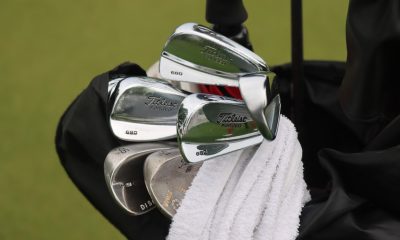

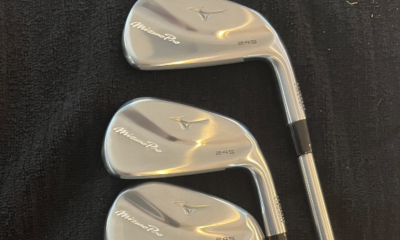


















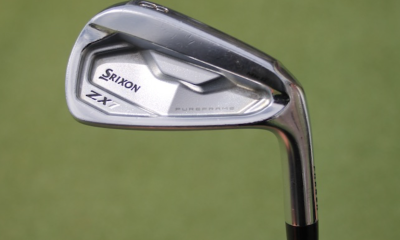



ChipNRun
May 1, 2019 at 12:11 pm
Terry,
Some of the Golf Evolution pros suggest short-game wedge play of “engaging the bounce.” This means for chips and pitches the golfer skims a high bounce wedge along the ground to contact, rather than engaging the leading edge (hitting down) on the shot. This supposedly encourages more consistent contact.
Edel wedges (some sole grinds with 20+ degrees bounce) are popular with this group.
Any thoughts on this technique which encourages higher wedge bounce for everyone?
A. Commoner
Apr 25, 2019 at 12:52 pm
By last count, there were a half dozen characters labeled “THE wedge expert” (or some sort descriptor)…..Will the real ace of clubs please stand? and pretenders bow out!
Donn Rutkoff
Apr 23, 2019 at 10:53 am
Anybody tell or feel if any difference in feel in the new Mizuno wedges with boron, beginning with the T7 and now S18? I love my pre-boron S5. Wonder whether to buy another S5 or move up to S18 when the S5 grooves are too worn?
Steve Wozeniak PGA
Apr 20, 2019 at 11:34 am
Still got my Eidolon 60 degree, guess you can tell I can’t play much!!!!!
About to order my new Black Hogan 60 degree to replace!!!!! Going to LOVE having that Hogan name on it, Thanks Terry.
Steve Wozeniak PGA
David Bloom
Apr 18, 2019 at 8:20 pm
A great explanation. If you have time in the future would you comment of wedge shafts? Just purchased a new set of Titleist wedges(50 and54) with light weight steel shafts. My irons have UST senior shafts in them and these new Titleist wedges feel so very heavy. Should I have the same shafts in my wedges as my regular irons, or is there another way to determine which shafts would work? Thanks
Jamho3
Apr 6, 2019 at 5:35 am
Jeez was it 1998 or 1997 I think I heard something similar..
Four Scottish Gents played the 1st round of golf in the America’s
Former Hogan exec
No big box
Green grass only
Sound familiar to anyone not named TK? Here’s a pic of the old boys Reid is in the middle.
h ttp://www.fathersofgolf.com/uploads/3/1/0/6/31065683/2731918.jpg?428
Jamho3
Apr 6, 2019 at 5:23 am
Terry you’re still the man! Stop pre-selling & get out and start manufacturing! Seriously.
David Bloom
Apr 5, 2019 at 8:00 pm
Hard Sand. Very little sand Our traps are poor…Any ideas for a sand wedge
kevin moran
Apr 5, 2019 at 4:06 pm
The article makes sense and I think the writer was trying to stress the difficulties in following the manufacturers oft-repeated fitting suggestions. I will say however as to the demo part of the article, that too many of these things are aimed at country club types where the pro may offer these services. I’m a daily fee and public course guy. We don’t have the option to try and then buy.
Simms
Apr 15, 2019 at 7:30 pm
Amen brother, it would be great if someone would start a site for the public golfer and give tips and ideas that are not for the low handicapper or Pro. But then no one is going to fund anything that is aimed at the non Country Club types..no money in it.
Alfredo Smith
Apr 22, 2019 at 1:33 pm
Not completely wrong about finding new demo equipment, you need the access to a local shop or GC that supports demos. Another option would be to purchase older wedges to test out which bounce options work for you.
Terry Koehler
Apr 4, 2019 at 8:00 am
To all,
Thank you for both the kudos and the challenges to my article on bounce. As I said, this is the most complex aspect of wedges and you all make very good points. In this article I was trying to cover bounce from the most basic angle, so I could not get into as much detail as the subject demands and should get. Based on your input, this next Tuesday I will take a bit deeper dive into the subject, specifically those comments about manipulating the face angle to affect the bounce, carrying a variety of loft/bounce combinations and ways to get around that “on course trial” issue.
I appreciate all of you taking the time to comment, as that helps me become a better resource for you as we go forward together.
Terco
Apr 4, 2019 at 7:52 am
I play on thigh turf but soft soil. To make it worse I have an steep downswing. The fat shot happens all the time with low bounce. Tried all kinds of 60’s . My teacher allways said that the 60 is a dangerous club. Probably a 58/8 is the best club for the amateurs.
Leftshot
Apr 3, 2019 at 8:39 pm
Wish I could give two reactions. Because I thought his analysis was honest and insightful and his advice on what to do terrible. As noted by others, it isn’t practical or possible to put his trial and error suggestion into practice. Plus as the author himself stated we don’t have the finely tuned senses the pros have to detect the best fit anyway.
W
Apr 3, 2019 at 5:46 pm
Terry bring back the SCOR wedges still the best…
Steve Cartwright
Apr 3, 2019 at 4:29 pm
That’s what not to do now let’s hear how to do it. Just hitting shots during a round is not sufficient. You need a practice routine off grass with the same make of ball hitting a number of different shots. If you can’t measure the results reliably you cannot compare the results.
I liked the article but it’s not complete
By the way I have just changed my wedges after a process sonos to the above.
Jack Nash
Apr 3, 2019 at 4:03 pm
I would think the grain would effect how or what wedge you would use?
Dave r
Apr 3, 2019 at 3:22 pm
I don’t know where this gentleman plays but my pro would be like are you nuts demo wedge. Here’s one for $150.00 it will work now run along can’t you see I’m busy . Never heard of a demo wedge or a place that has them for that fact . Oh I have some the ones I bought that didn’t do the job want some ? Thanks for the article but no thanks.
Tee Lassar
Apr 3, 2019 at 2:27 pm
It’s not just about the bounce–there’s the issue of GRIND. If you look at, for example Vokey wedges there are T, C, P, L, R grinds which in combination with different lofts and bounce give a massive number of choices. Only trial and error on the range will help pick out the right ones. I suggest getting your gapping right, then select the wedges that work for the majority of lies and turf conditions you are likely to encounter, then take a short game course from Pelz et al and learn how to use your wedges properly
Brian Terry
Apr 3, 2019 at 11:43 am
WOW! The guy simply tells the truth and everybody piles on cause they didn’t hear what they expected. What he’s saying is the wedges YOU NEED will vary from course to course and sometimes from hole to hole. What does this mean???? You need to learn how to hit the right shots when you don’t have the ideal wedge. Sure, get the wedges that suit your typical swing and course, but practice in those areas that aren’t typical so you have experience to overcome NON-typical situations.
BT
Jack Wullkotte
Apr 3, 2019 at 10:29 am
Sorry, but this article is nothing but a bunch of double talk. Time and again, I have seen the touring pros skull shots, shank them, chili dip them and even whiff them. They very seldom show these shots on “the shot of the day.” How do you determine the amount of bounce you need to prevent skulling the ball? Duh.
Mark
Apr 3, 2019 at 9:13 am
Mr. Koehler, after reading your opening statement, and I quote “Based on my 25+ years as a wedge designer and marketer”, I thought here is an article which will add to my knowledge of wedges and bounce angles. Sadly, it did not. At all.
Alex
Apr 2, 2019 at 6:46 pm
Or maybe vary bounce per wedge…fluffy sand but also like to slide under it on chips go 56/14 and a 60/04 or 06 or 54/14 58/04 or something. Bounce doesn’t seem to be a full shot issue, but a partial shot or bunker issue. Maybe you are a 52 58 guy that uses your 58 for everything bunkers and chipping then go 8 bounce with a versatile grind that allows you some bounce in sand but not so much or versatile enough to slide under it. You really just gotta step up and hit the shot and rule of thumb bounce helps in the bunker unless the bunkers are rock hard then chip it out anyway and low bounce helps a lot on hitting the nipper with tons of spin. Personally think the worst is having a shot that calls for a ton of spin where you are short sided or need to really clip it and you stare down and find out you are holding a shovel and you know you are most likely gonna skull it cause the leading edge is 1/4 of the way up the ball.
Alex Fong
Apr 4, 2019 at 3:00 am
Bravo! Best answer of the bunch. This is what I do as well. One sand and one lob wedge will never be perfect for every situation, but if they are different in bounce and sole width, they can handle a wider variety of lies than if they are very similar. And in addition to their aspects on paper, the bounce of each wedge can varied by opening and closing the face. This expert could have taught us something by saying this and explaining how to handle his mixed-demand lies with the players differing angles of attacks. He could have also explained the difference uses/effects of wide vs. narrow sole as they are mixed with high bounce vs. low bounce. He gave us problems but gave us no guidance to think through the situation so each player could and pick the best tool for the job for them. Just suggested that we do what we’re already doing, experiment.
Larry
Apr 2, 2019 at 3:35 pm
I had to check the date on this article because it reads like an April fools joke. So, to sum-up the only way to know what wedge works the best is to try it on the course. That’s brilliant!
Rick
Apr 3, 2019 at 2:08 am
I was thinking the same…lol. Also the courses I usually play dont have a pro,they have “the guy at the desk”. This article is worthless.
A. Commoner
Apr 16, 2019 at 2:24 pm
This article will be followed by “The Sun Rises in the East and Other Useful Information.”
Richard
Apr 2, 2019 at 3:12 pm
I have a steep angle of attack. This is why, even as a single-digit handicap, I played Ping G series clubs instead of the I series.
When I switched to single-length clubs more than 2 years ago, I went to Wishon Sterlings. Loved them–and still game them without ever looking back at the Pings I left behind. But I really struggled with the gap wedge. I kept sweeping the club under the ball and popping it up. Then I looked over the specs and found that the bounce angle in the Sterling GW was 4 degrees shallower than in the Ping. No wonder! In fact, this was true throughout the set.
I still play with the same angle of attack, but I have the ball slightly further back in my stance. (Easy to do since it is the same with every iron!) I’m trapping it more, which actually increased both distance and spin, which I like. I don’t know if I could even return to a higher-bounce set, especially in the wedges.